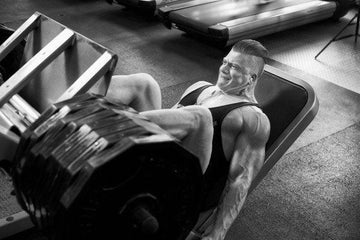

Bench Press like a Boss!! Speed Bench Press Training
Table of Contents
Want a Bigger Bench? Try Speed Training
Many different variables are important to consider when creating resistance training programs. However the lifting speed that exercises are performed with has not been studied as extensively as many of the other factors. Some research has indicated that training with specific lifting speeds results in improved strength or hypertrophy adaptations compared to other lifting tempos, but more research is needed to reach better knowledge on what lifting speeds are optimal for specific goals. Researchers examined the effect of various lifting speeds on different factors known to influence resistance training. They measured variables of muscle activity,maximum amount of repetitions performed and time under tension during bench press. Thirteen males performed bench press at their individual 6 RM. The exercise was performed to fatigue with three different lifting tempos:
-4 second repetitions (medium),
-6 second repetitions (slow) and
-repetitions intentionally performed as fast as possible (fast).
Number of repetitions performed and total time under tension for each test was recorded in seconds. EMG was used to register muscle activity of pectoralis major and front anterior deltoid. At the end of the study, EMG amplitudes were higher in pectoralis major when a fast lifting speed was used compared to the medium and slow conditions. More repetition were performed with faster lifting speeds. The higher EMG amplitude associated with a faster lifting tempo may be explained by the greater force production for fast velocity contractions compared to slow velocity contractions and the accompanying greater recruitment of motor units and activation of fast twitch muscle fibers associated with accelerating the bar to higher velocities.

The time under tension was longer for the slow and medium lifting tempos than for the fast lifting tempo. The result from this study can be considered when designing resistance training programs. Based on the increased performance and muscle activity associated with the fast lifting tempo, faster lifting speeds may be beneficial when the training goal is to increase strength levels. It is difficult to draw any conclusions regarding the optimal lifting tempo for specific training designed to increase hypertrophy, but the time under tension appears to be longer for slower lifting speeds. So if your looking to get stronger, than lifting the barbell as fast as possible seems to be a good training technique to increase maximal strength. If you look at the legs of top sprinters, it seems that speed training can also increase muscle mass but the optimal rep speed for increasing muscle mass is still unknown.
Mårtensson, Gustav. “The effect of lifting speed on factors related to resistance training: A study on muscle activity, amount of repetitions performed, and time under tension during bench press in young males.” (2015).
Pryor, R. R., Sforza, G. A. & King. D. L. (2001). Optimizing power output by varying repetition tempo. Journal of strength and conditioning research, 25(11), 3029-34.
Sakamoto, A. & Sinclair, P. J. (2012). Muscle activations under varying lifting speeds and
intensities during bench press. European journal of applied physiology, 112(3), 1015-25.
MUSCLE MEDIA MAGAZINE FOR MEN
The premier source of training, nutrition, supplements, fat loss and health for men.

















